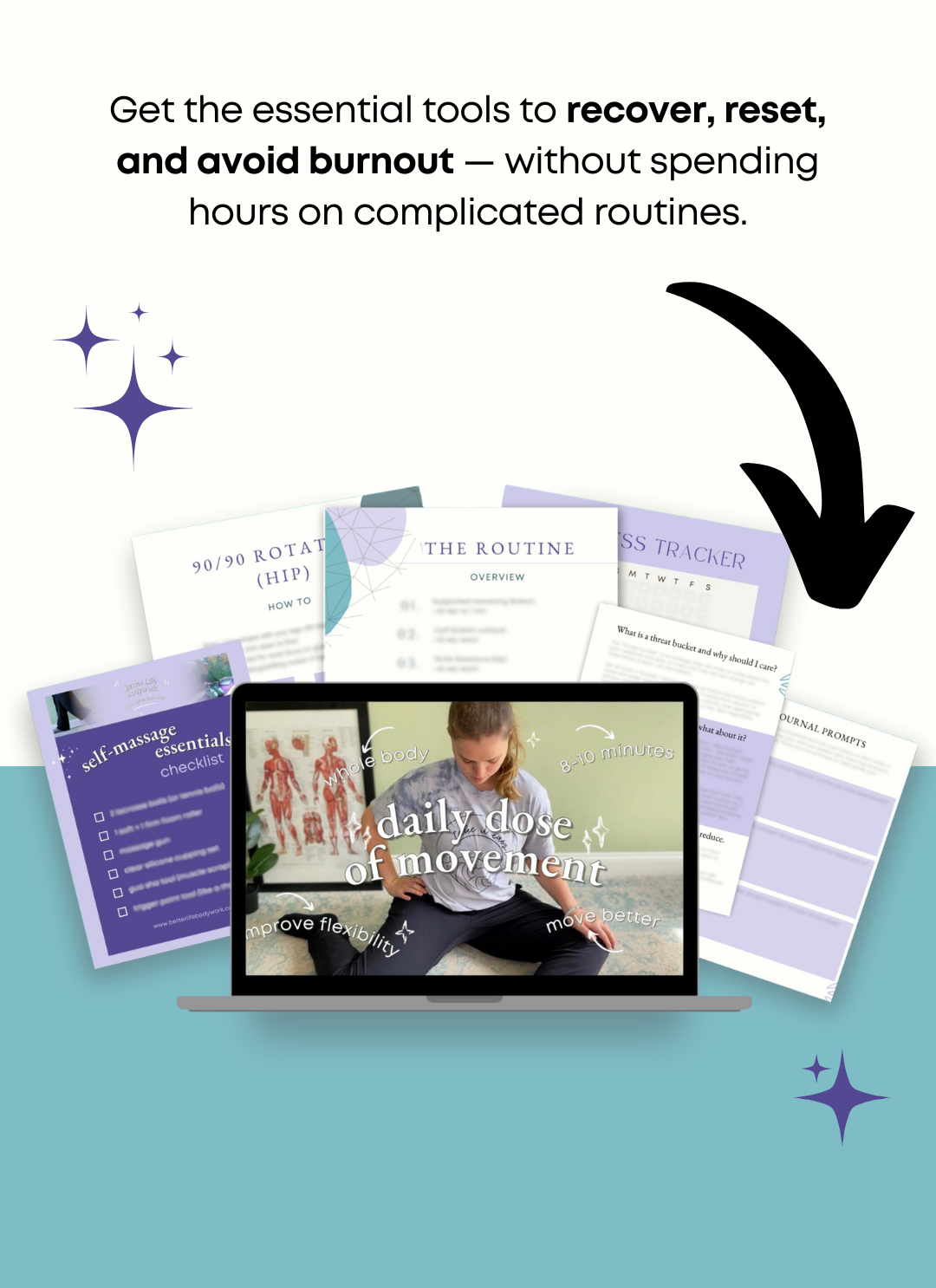Manage Pain Better by Reducing Threats
What is a “Threat Bucket” and why should I care?
The “threat bucket” is a nervous system analogy that can help us understand our pain response and give us clues into how we can change our experience of pain. Let me explain.
We all have a “bucket.” Some are made of metal and others plastic - some are larger and others are smaller.
Okay, so I have A “bucket” what about it?
As we go through life, our body (nervous system - aka bucket) collects “threats” or perceived threats.
Things like… the ankle injury you got when you were 8, the lumbar spine surgery you had recently, the stressful relationship with your sister-in-law, or going on 5 hours of sleep for the 3rd day in a row.
All of these are threats to your nervous system and each of these - a drop in your bucket. Why does this matter?
Because eventually, you hit the threshold and things spill over into pain.
It could be something as simple as “bending over to pick up a sock off the floor” or “waking up and twisting your neck weird and now you can’t move” that pushes you over.
You’re probably thinking “well that sounds terrible!” or “that makes so much sense!” But what can you do about it?
Figuring out what threats you can reduce.
Well, if you know what your threats are, you can 1) start to limit what goes into your bucket and 2) remove what you are able to from your bucket.
Sure, maybe you can’t undo your spinal surgery, but you can get more sleep!
Maybe you can’t undo that ankle injury from childhood, but you can prioritize rehab and get bodywork for it!
Therapeutic Massage & Bodywork
LET US HELP YOU ACHIEVE YOUR GOALS
We specialize in sports massage, orthopedic massage, and wellness massage! Our focus is on pain relief, range of motion and flexibility work, myofascial and muscular restrictions, and recovery bodywork.
READY TO BOOK YOUR NEXT SESSION?
Pain is a tricky, complex thing and it's extremely individual which makes it hard to combat. But if you simplify it, pain is really a signal that your body gives you when asking for change.
Knowing what things are in your threat bucket gives you a better chance of making that change, ultimately helping you manage your pain better.


